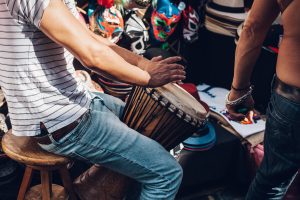Street photography can be an exciting challenge, but it also means you’re at the mercy of the elements. Rain, in particular, can pose a challenge when you want to capture the energy of a rainy city, but you also need to protect your gear. So how do you take photos in the rain without risking damage to your camera?
You could always stay inside when the rain starts falling, but that would limit the potential for unique shots. If you live in a rainy area, like I do, avoiding the rain would severely restrict your photography opportunities. So, let’s explore how to safely take street photos during a downpour.
How to Keep Your Camera Dry in the Rain
Protecting your camera is crucial, as it’s a significant investment. While some cameras come with weather sealing, this doesn’t mean they are entirely rainproof. Here are some tips to safeguard your gear.
Start by checking if your camera has weather-sealing, which is often noted in the product specifications. However, even with weather sealing, you should still take precautions when photographing in the rain. Keep your camera covered as much as possible by using an umbrella or tucking it under your coat when you’re not actively shooting.
Consider using a camera cover or sleeve to further shield it from the elements. There are numerous options available, from ready-made covers to DIY solutions that can do the trick.
Don’t forget about your lens! Attach the lens hood to protect the front element from rain drops. This not only prevents damage but also helps maintain sharpness in your photos and reduces the likelihood of smudges on the lens. When walking around, keep the lens pointed downward to minimize rain exposure.
When it’s time to change your memory card or battery, ensure that the camera is dry before opening any compartments. A small towel in your bag can help you dry off any moisture and prevent it from entering the camera and causing internal damage.
How to Protect Yourself in the Rain
While your camera is your top priority, you also need to stay dry to continue shooting comfortably. A reliable raincoat will keep you protected, and an umbrella can offer extra coverage. However, handling an umbrella while shooting might be cumbersome, so balance convenience and functionality.
Opt for waterproof shoes to avoid soggy feet while walking through wet streets. Being comfortable and dry will allow you to focus more on capturing the perfect shot.
Camera Settings for Rainy Street Photography
There’s no one-size-fits-all approach when it comes to settings for rainy street photography, as it largely depends on the scene you want to create. But knowing how to manipulate your exposure triangle (shutter speed, aperture, and ISO) will help you adapt to various conditions.
Shutter Speed: Your shutter speed depends on whether you want to freeze motion or capture movement. Wet streets are perfect for ICM (Intentional Camera Movement) photography, as the rain often creates stunning reflections that add color and light. However, if you want to freeze motion, like a car splashing through a puddle, you’ll need a faster shutter speed to capture that action.
Aperture: Aperture is important for controlling how much of the scene is in focus. Since rain can dim the light, shooting with a wider aperture (like f1.8) can help gather more light. This is especially useful when visibility is low due to the weather.
ISO: While many photographers prefer to keep their ISO low to avoid noise, modern digital sensors handle noise much better than before. I often use auto ISO, as it adjusts according to the light and helps ensure proper exposure even in lower light conditions.
Finding Inspiration in the Rain
A familiar street transforms completely under the rain, offering new opportunities for creativity. People with umbrellas create unique silhouettes, adding texture and color to the scene. You can also use puddles as mirrors, capturing reflections that give your compositions a fresh perspective.
The wet streets can also reflect artificial lights, adding vibrancy and depth to your images. The textures created by water, both in puddles and on the streets, can add a layer of interest to your photos.
Conclusion
Rainy days offer street photographers a chance to capture the city in a whole new way. By taking a few simple steps to protect your gear and adjust your settings, you can embrace the rain and create stunning photos. So, next time it rains, don’t stay indoors – get out there and capture the beauty of the wet streets!




